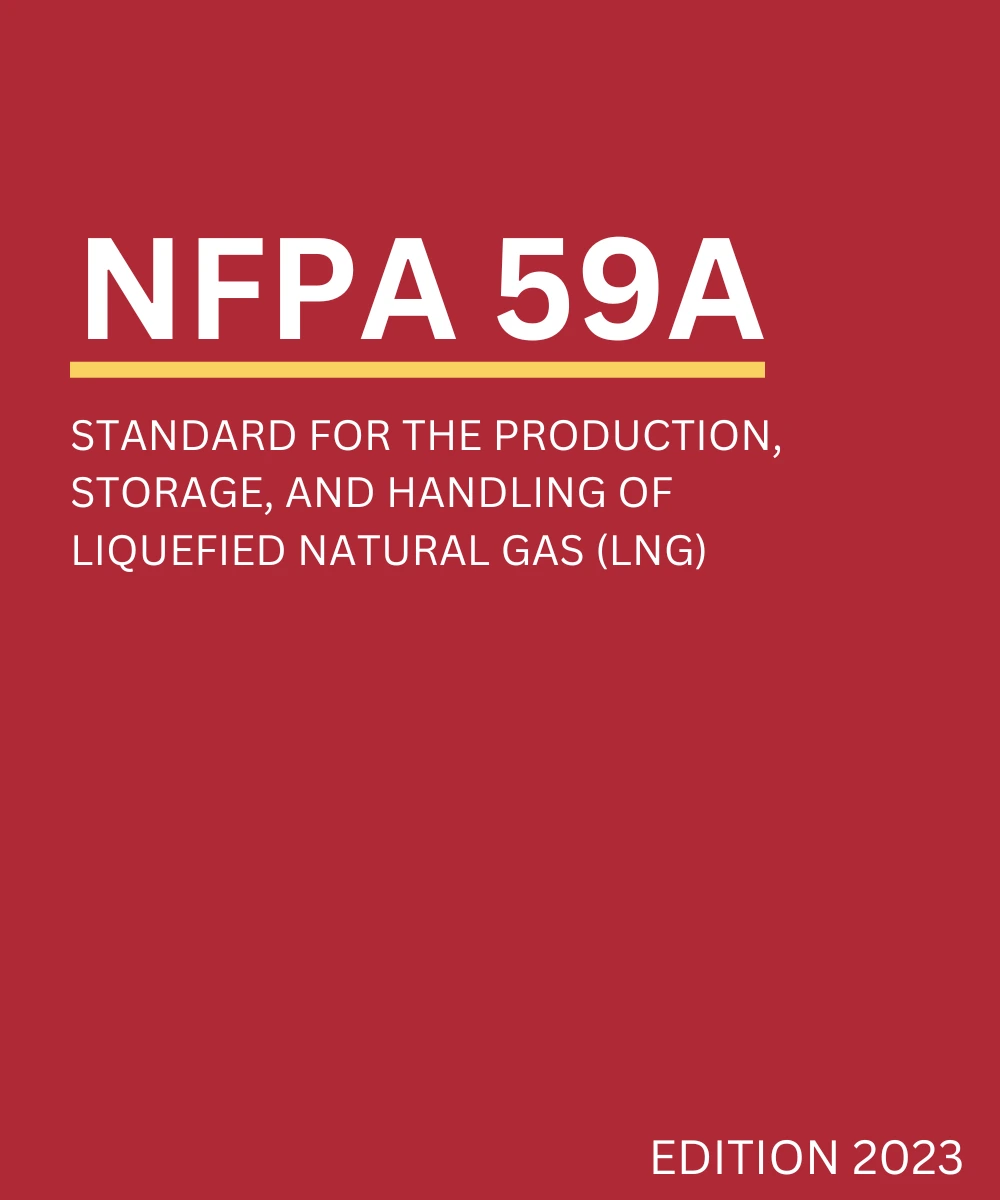
NFPA 59A: Standard for the Production, Storage, and Handling of Liquefied Natural Gas (LNG)
This standard establishes minimum fire protection, safety, and related requirements for the location, design, construction, security, operation, and maintenance of liquefied natural gas (LNG) plants to ensure safe and secure operations.
Current Version: 2022
Revision Cycle: Fall 2025
Next Edition: 2026
Status: Active
Introduction
NFPA 59A provides detailed guidelines for the safe production, storage, and handling of Liquefied Natural Gas (LNG). The 2024 edition introduces critical updates to improve safety measures, handling protocols, and operational procedures within LNG facilities.
Key Changes in the Latest Edition
- Enhanced Safety Standards: Updated measures for protecting LNG facilities from potential hazards.
- Operational Protocols: Refined storage and transport procedures to address modern challenges in LNG handling.
- Environmental Considerations: Additional guidelines for minimizing environmental impact during LNG production and storage.
Notable Features of the Current Version
- Detailed hazard mitigation and risk management protocols to ensure LNG facility safety.
- Updated operational guidelines to align with modern safety standards and technology.
- Focus on minimizing environmental risks during LNG production and storage.
Practical Implications
LNG facility operators must implement these new safety protocols and environmental considerations to meet the 2024 edition’s requirements, ensuring better compliance and operational safety.
Conclusion
The 2024 edition of NFPA 59A brings forward stronger safety measures and operational guidelines, addressing both modern challenges and environmental concerns in LNG production and handling.
Access NFPA 59A Now!
For a thorough understanding of the updated protocols, consult the 2024 NFPA 59A edition or work with certified professionals in LNG safety and operations.
Book a free demo
Digitalize your Inspections with ZenFire
- Faster Inspection
- Deficiency Reporting
- Proposals
Everything you need in one Software.
Company
Support and Services
- (206) 456-8988
- 236 W 27th st Floor 12, New York, NY 10001, United States
- 299 Fremont St APT TH313, San Francisco, CA 94105
- A-302, Nyati Tech Park, New Kalyani Nagar, Wadgaon Sheri, Pune-411014
- hello@zentrades.pro
© 2025 ZenTrades Inc

